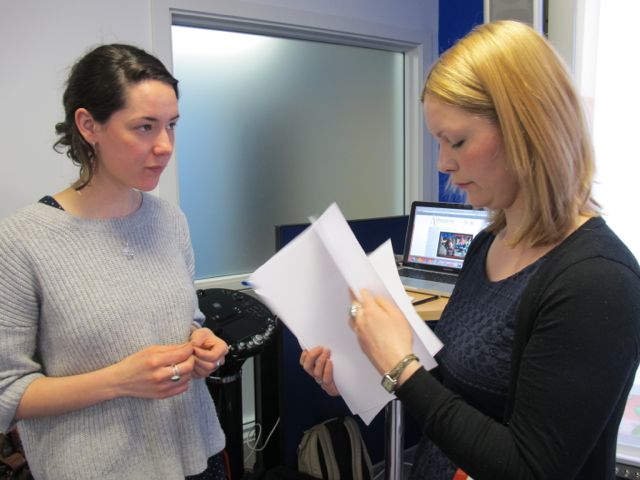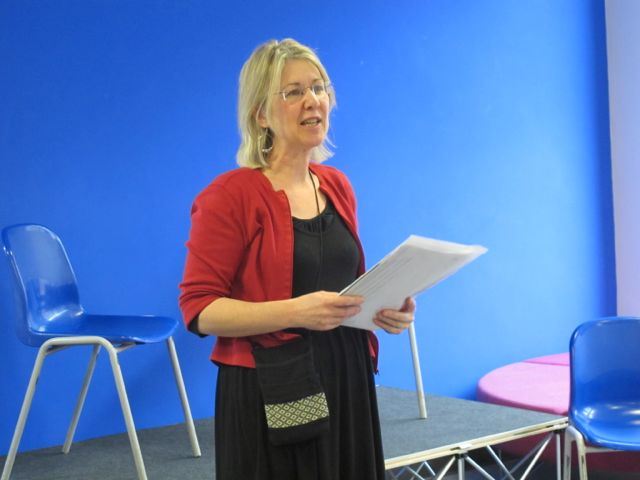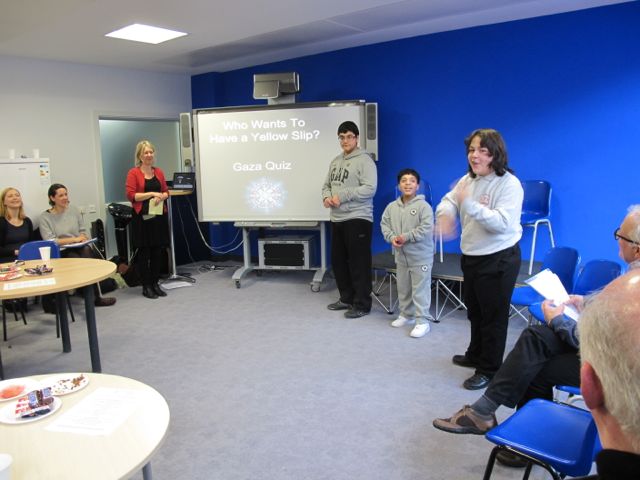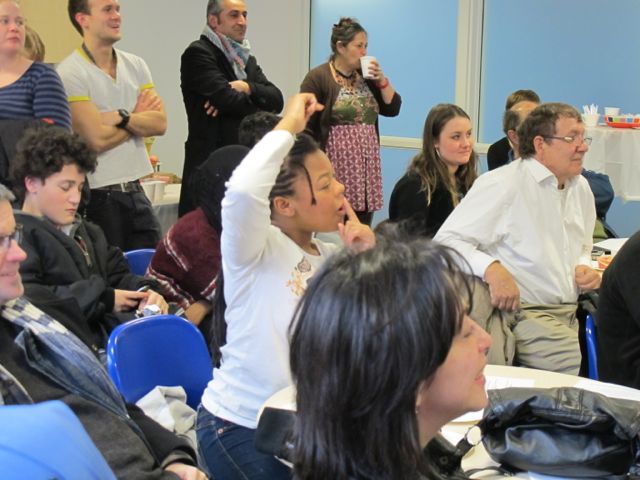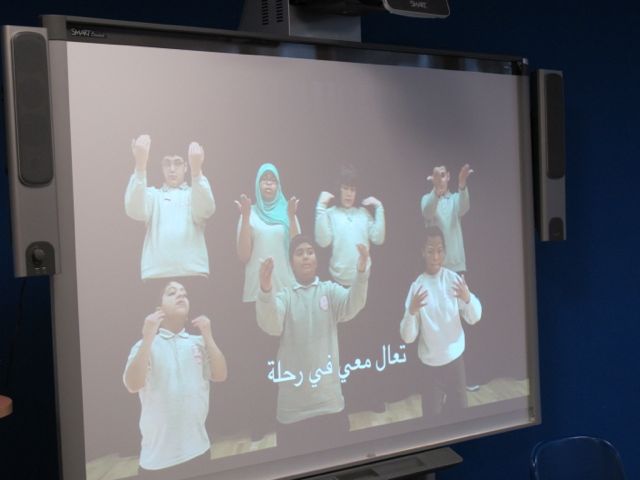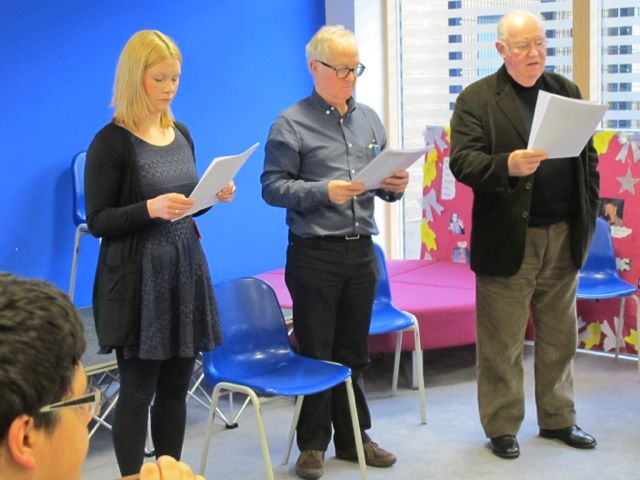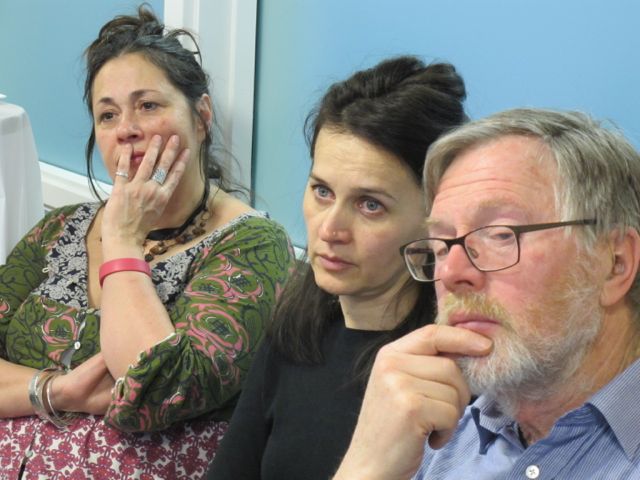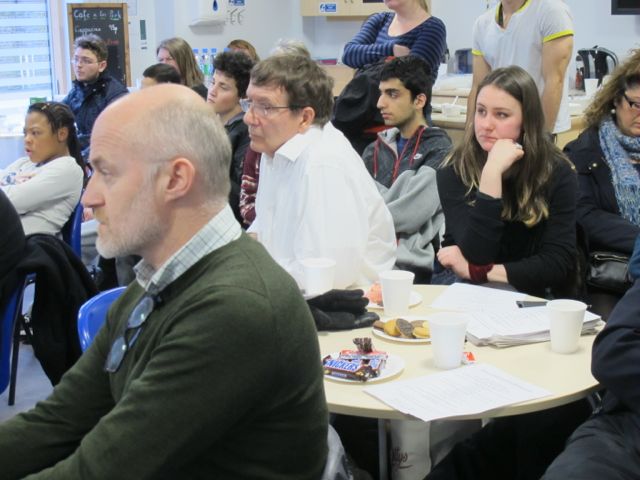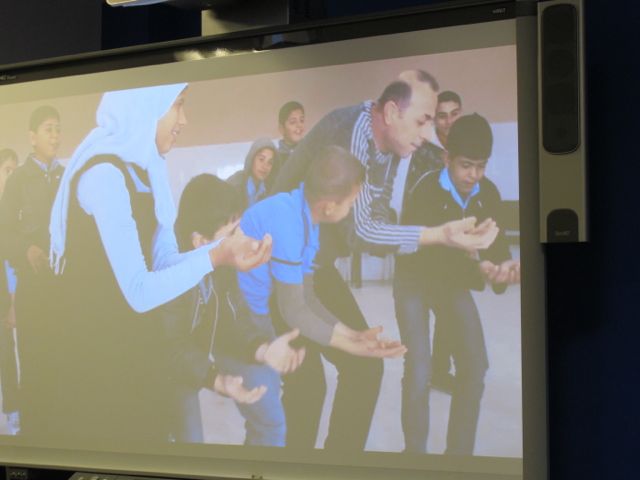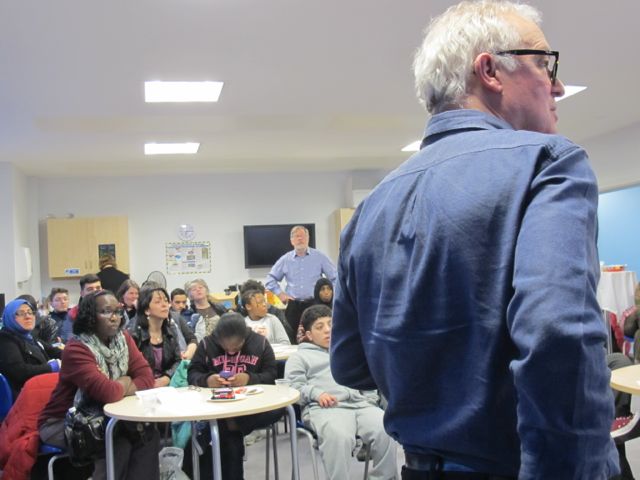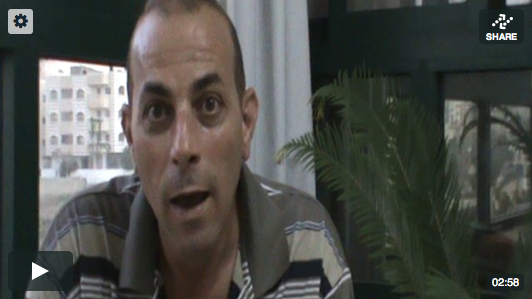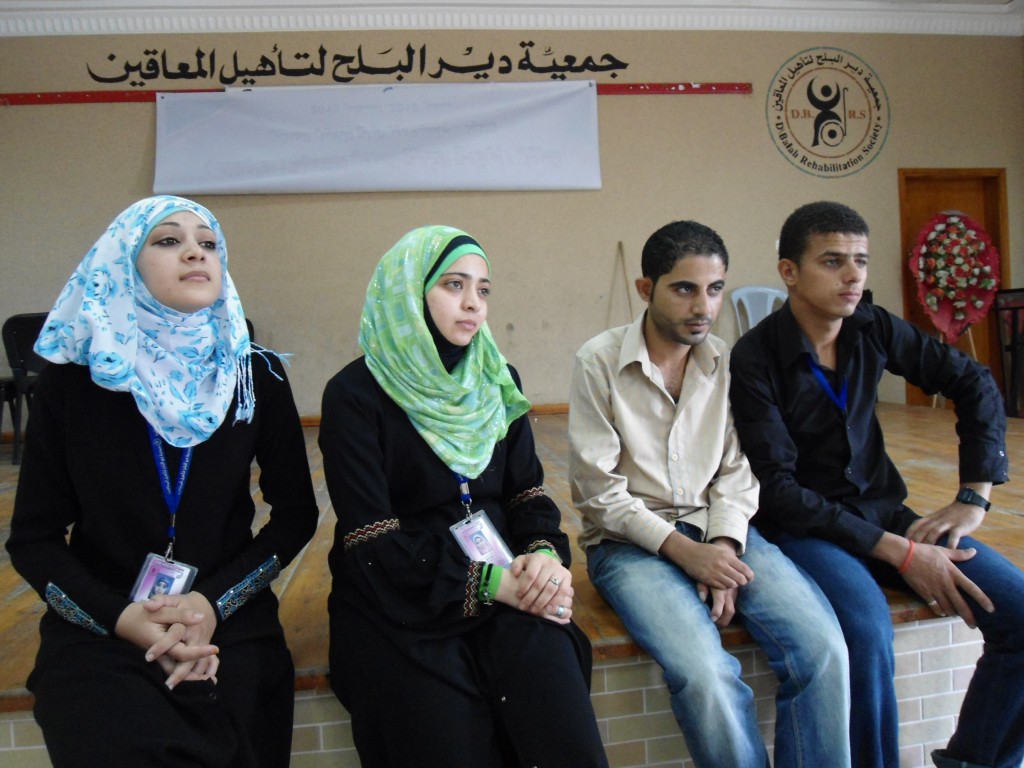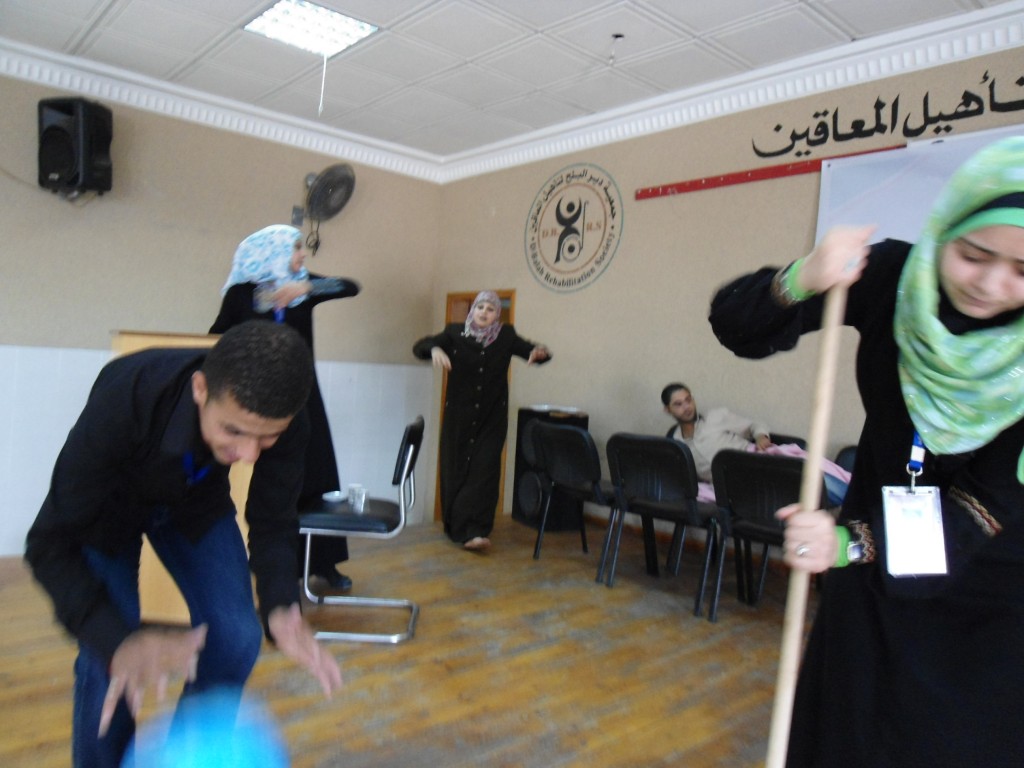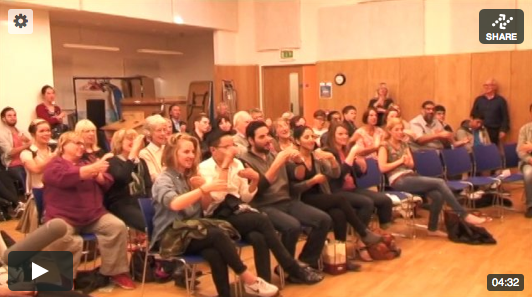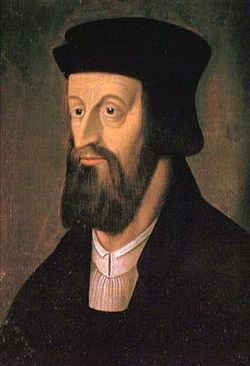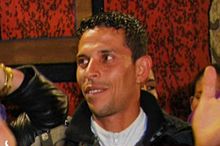This is the last mappa mundi blog!
mappa mundi is on the move again after a winter rest!! You can see the first three mappa mundi videos NOW.
We have two ‘get togethers’ coming up, on Thursday 21st February and Thursday 28th February 2013. On these two evenings the participants in the November creative sessions are getting together with special guests to develop the mappa mundi project. So these will be like focus group meetings and the emphasis will be on how to extend the project online and through other creative participant sessions. Aims: get a space up online! And more videos from more groups.
We are talking to Roberto Battista who works in audio-visual and interactive media about the design of the online interactive space where the mappa mundi 3-minute drama videos will be uploaded and interconnected!
We are very pleased to welcome Bryce Lianna who is coming to work with Az Theatre on a placement from the University of Leeds where she is studying for a BA in Theatre and Performance. We are undertaking a training weekend in Leeds for Bryce and her colleagues where we will be making a mappa mundi. She will also be working on selecting and developing another group who will be making their own mappa mundi later in the year.
Other work is being planned at the Red Brick Building in Glastonbury and amongst students at the Ecole Jacques Lecoq in Paris.
Our January 10th live event viewing of the three mappa mundi videos produced by the November workshops was a great success and it was from the conversation at this event that the following notes were made:
Notes and thoughts after the viewing event on Thursday 10th January 2013 from Jonathan Chadwick – January 16th 2013
What follows are intended to provoke the forward movement of mappa mundi. They are like an assessment or progress report directly arising from the CREATIVE SESSIONS WEEKEND 2/4th November 2012, the feedback from participants and the live event on Thursday 10th January where the videos were viewed.
- We will be having some follow-up get-togethers in February principally for participants but also open to companions.
- We need more participant groups so we can carry through what we have learnt.
- We need online space design skills.
Responses to the videos
SEEKING, EXPLORING and WITNESSING, the 3 three-minute videos produced from the work at the creative weekend 2/4 November, do not ‘stand alone’. Seen separately or together as a series they may not convey the intentions or inspirations that went into the process of making them. As dramatic works they may lack directorial intensity and the focus of a thoroughly worked script development. They may actually not strike a clear meaning in the viewer even when the basic thematic of change is well advertised.
Viewing situation
It may be that the context that was given to the videos at our event, by my introduction, might have prevented people from fully responding to what occurred on the screen. The expectation of significance can cause a kind of myopia, a perceptual dysfunction.
Larger work
On the one hand, these videos are not intended to be viewed in isolation. They are a part of a larger work. On the other, at this stage in the construction of the larger work, there is a need for the initial works to be inspirational and accessible. This is important to attract participants.
Mis-match
There may be a simple mis-match between the aspiration of the project (to show or express human change) and the form (a three minute drama video). It may be true that if this basic brief was given as a commission to expert (or aspiring professional) film-makers the results may be problematic simply because the processes of identification and elaboration, that we normally need to enter into for drama to work, cannot happen in three minutes.
Reason for limits
The three-minute time limit derives from a perception of how long people may watch things on the internet. It doesn’t come from a perception of how long it takes to convey a story about human change.
Videos as links between spaces
This may present a fundamental problem with our attempt to find a creative link between the creative space of human storytelling and the online interactive space of the internet.
Need for artistic development
These specific examples (SEEKING, EXPLORING and WITNESSING) may have been made in circumstances that did not permit a proper artistic development.
Time limits and quality
In assessing the quality of the work over the 2/4 November weekend participants commended the delivery of the exercises and the sense of communication, creativity and empowerment to which they gave rise. Everybody realised that there was not really enough time to accomplish the tasks that were set and sensed that there was a certain amount of ‘cramming’. The sequencing and timing of the process could be improved. Some participants appreciated the creative benefits derived from the pressure of deadlines and the formulaic nature of the tasks.
Nature of the participant group
The group who were brought together on the 2/4 November were a highly creatively motivated and creatively literate group of individuals, a considerable proportion of whom were photographic, cinematographic or dramatic practitioners.
Imaging stories
The overall build-up to the ‘discovery’ and articulation of the stories of change that could be told by the group seems to have been on the whole well managed. Key to this process was firstly, the creation of a space in which people could reflect on the nature of change as it manifested itself individually, socially and environmentally; secondly, the creation a space of trust and communication amongst the group; thirdly, the creation of a means of embodying images of stories that was in itself sensually and collectively engaging; fourthly, a tangible and imaginative engagement with the expressive and narrative capacity of moving picture images.
Departure from prior plan
In terms of time management and direction of the process of making the videos there was a departure from the ‘plan’ developed by the ‘directors’ at the point where the participants had refined their individual stories of change. The previously conceived plan was to view all the images of the individual stories on the Saturday evening, leaving Sunday for the work of animating these images, exploring the connections between them, searching for how many stories could be distilled into one story, refining the dramatisation of narratives.
Clarity for non-participants
This last observation may not be clear to readers of this who were not participants. Let me explain that each participant made an image of the key moment of change in their story of change using the bodies of other participants. This process of definition and embodiment happened after an earlier introduction to the plasticity of image making and an earlier exercise sequence where the stories were selected and refined through exchange and role-play. The aim was to base the work that would go into the dramatic videos on the ‘real’ stories of individuals.
What was rushed
It was the adaptation of these ‘real’ stories into dramatic fiction that had to be rushed and this multiple task was simply given to the three working groups to accomplish. The groups were instructed and guided but there were not ‘hands on’ directed. There may have been damaging problems that arose in the ‘cramming’ or ‘rushing’ of the process.
Trust and creativity in the group
Because there was such a high level of trust and creativity in the group (which for the purpose of video-making was divided into 3 groups of six people) the work was managed and accomplished with success but still this success may have been limited by the impact of this pressure.
Numbers of participants
It is worth noting that the group consisted of 19 people, four of whom were presenting exercises. Our initial estimates for the work had given us a ceiling of 12 people. It became clear during the work that given the time limits a working group of approximately 6 people was effective to make a short video. There were benefits from the overall group being so big. It gave a feeling of variety and critical mass to the work.
Experiment and other models
Also, the weekend was deliberately experimental. There may be other ratios between ‘participants’ and ‘presenters’ that might have been more effective. For example, if it was possible to combine the ‘presenter’ skills in two people, one of whom was particularly expert in video, and they were working with a group of 8 ‘participants’ and the aim was to make one three-minute video. This may significantly change the timing and scheduling possibilities.
Editing process
The foregoing only deals with the shooting/filming of the videos. The editing process, which in the current project has been carried on so inventively, raises more questions about time and scheduling.
Whereas the editing process has been as collective as possible for SEEKING, EXPLORING and WITNESSING this was never thoroughly integrated into the scheduling of the project despite Marleen and Sara making clear how crucial this process was. The fact that we have the finished products is a combination of real good fortune, generosity and sensitive skills.
Many stories, one story
We, the ‘presenters’ knew that a crucial stage in the process of arriving at a story of change was the way in which individual stories can be combined into one story. There is a lot to be said about this stage of the work. Each of the three groups undertook different processes in discovering the story that was to be told. However more directional input should and can be given to this process. I believe that this gap in the work over the 2/4 week-end was registered by many of the participants in the assessments they have given. The foreshortening of this part of the process was a major casualty of the lack of time.
Getting together
One of the main suggestions coming out of the event on Thursday 10th January was that the participants should be invited to get together again to help the ongoing feedback and project development process.
Movement from many to one/ from image to shot
There needs to be a more organic directional movement from the creation of individual images to the discovery of the ‘key’ story. There also needs to be a similar creation follow-through from the concentration given to the ‘image of the moment of change’ in the image work to the conception of the ‘key’ shot within the nine-shot form of the video.
Training and participation
There are other inputs that may substantially raise the quality of creative experience and outcomes. Whereas we cannot expect a ‘conservatoire’ training within the limits of the project, a distillation of best practice and refinement of sensual creativity can be given. However, the key to the mappa mundi project is participation and the key to the participation is rooting the work in people’s own lived experience.
Specific improvements
Firstly, more input can be made on the composition and execution of the filming of dramatic action; specifically, the aesthetic and narrative qualities of the shot.
Secondly, more input can be made on editing; specifically, what is the nature of the ‘cut’. Further to this we need to schedule into the work how the editing can be accomplished.
Thirdly, more input can be made about acting for camera.
Bringing arts together
How the dramatic and cinematic arts come together in our work and how we generate this capability in participants without an elaborate professionalization of the process and the product is a vital question. We are trying to be formally inventive. We want to propose the three-minute drama video as a means of expression and we want to link this to an online interactive space that serialises the work.
Functions and modes
It is questionable whether the same members of the group should be involved in both story creation and filming. The challenge is to find the key to creative fluency between these aspects of the work. This includes ensuring that the exercises in one mode and the other flow well into each other.
Online delivery and connectivity
There was a ferment of discussion at the event about how the connectivity online may work, how one video might connect to another, might take scenes from another, might respond to another. I wish I could re-capture this ferment.
There was considerable discussion about accessibility and how vivid material about the making of the videos could somehow trail or accompany the videos online.
In order for mappa mundi to work it has to break boundaries. It can’t just be to do with leaving the cultural forms of expression as they are given. This is why culturally diverse forms such as the haiku and the sutra come into play. Also, mappa mundi needs to be a popular art form so the idea of serialisation and of games (like ‘Consequences’) may suggest creative directions.
End
One of the major aims of the event was to bring to the participants and to the other interested people (those I referred to as the ‘companions’) a more overall sense of the project and to set the creative sessions work within the context of the collective work of creating an online space, a changing map of a changing world composed with people’s dramatisations of stories of change, a mappa mundi! I believe the event was achieved this agenda shift. But the event at least reminded me of how much work there was to be done!

